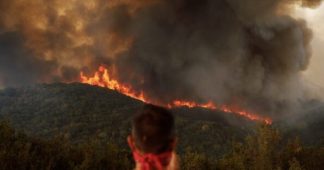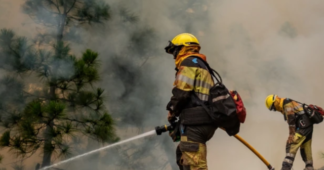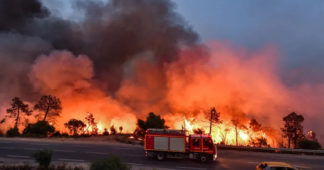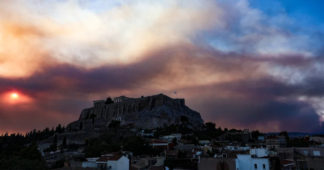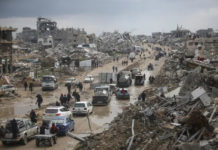Ajit Niranjan
Aug 13, 2025
Unprecedented temperatures causing difficulties in south-west France, Croatia, Italy and Spain with wildfire destruction across Europe up 87%
Extreme heat is breaking temperature records across Europe, early measurements suggest, and driving bigger and stronger wildfires.
In south-west France, records were broken on Monday in Angoulême, Bergerac, Bordeaux, Saint-Émilion and Saint-Girons. Météo France said the “often remarkable, even unprecedented, maximum temperatures” in the region were 12C above the norm for the last few decades.
In Croatia, air temperature records were set in Šibenik, at 39.5C, and Dubrovnik, at 38.9C, while large forest fires raged along its coasts and ripped through neighbouring countries in the Balkans.
Beyond Europe, dozens of temperature records were broken across Canada, and record-breaking heat above 50C in Iraq was blamed for a nationwide blackout.
The heatwave in southern Europe comes as Nordic countries recover from unprecedentedtemperatures above 30C in the Arctic Circle this month.
Bob Ward, a policy director at the Grantham Research Institute, said: “This summer, like every summer now, has been exceptional in terms of extreme heat around the world.”
“The main characteristic [of the heatwave] is the length and extent rather than the intensity,” said José Camacho, a climate scientist and spokesperson for Aemet, the Spanish weather agency. “But the temperatures are still very high.”
In the south-west of France, 40% of a sample of weather stations recorded temperatures above 40C on Monday. Lauriane Batté, a climate scientist at Météo France, said it was too soon to say if records were being “shattered” rather than simply broken, but said the geographic extent of the heat was significant.
“Unfortunately, it’s to be expected,” she said, adding that more than half of the 51 heatwaves in France since 1947 had occurred in the last 15 years. “Clearly, it’s a sign that the climate is warming.”

The hot weather across Europe has dried out vegetation and allowed wildfires to spread further, in what scientists have described as a “molotov cocktail” of climatic conditions. EU fire scientists projected “extreme to very extreme conditions” across the entire continent this week, with “particularly severe” risks in much of southern Europe and high anomalies expected in parts of the Nordics.
Wildfires in Europe have burned more than 400,000 hectares so far this year, according to data published on Tuesday, which is 87% more than the average for this time of year over the last two decades.
High heat kills tens of thousands of people in Europe each year. Researchers estimate that dangerous temperatures in Europe will kill 8,000 to 80,000 more people a year by the end of the century as the lives lost to stronger heat outpace those saved from milder cold weather.
Antonio Gasparrini, an epidemiologist at the London School of Hygiene & Tropical Medicine, said implementing effective and diverse public health measures was critical as heatwaves became more frequent.
“This is another extreme heatwave hitting Europe this summer,” he said. “As in previous events in the past months, we can expect not just a substantial death toll but also strong geographical differentials in excess mortality.”
Last week, the World Meteorological Organization said wildfires and poor air quality were compounding the negative health effects of extreme heat. It noted that temperatures during the first week of August reached more than 42C in parts of west Asia, southern central Asia, most of north Africa, southern Pakistan, and the south-west US, with local areas exceeding 45C.
“This is what climate change looks like,” Ward said. “And it will only get worse.”
We remind our readers that publication of articles on our site does not mean that we agree with what is written. Our policy is to publish anything which we consider of interest, so as to assist our readers in forming their opinions. Sometimes we even publish articles with which we totally disagree, since we believe it is important for our readers to be informed on as wide a spectrum of views as possible.
